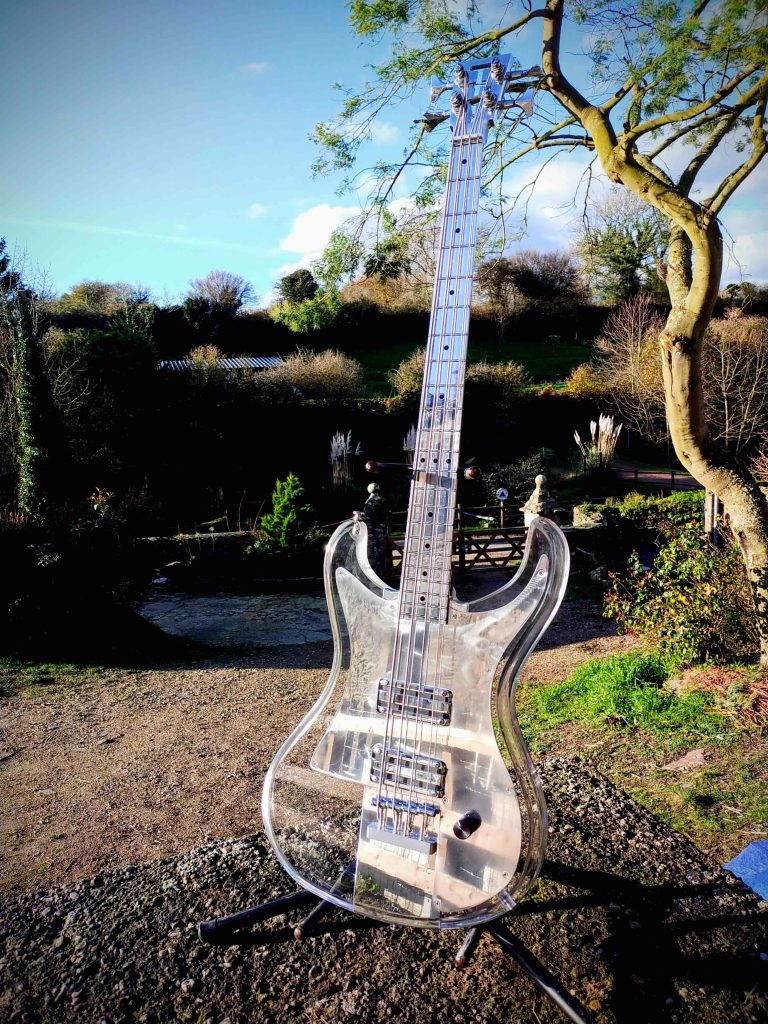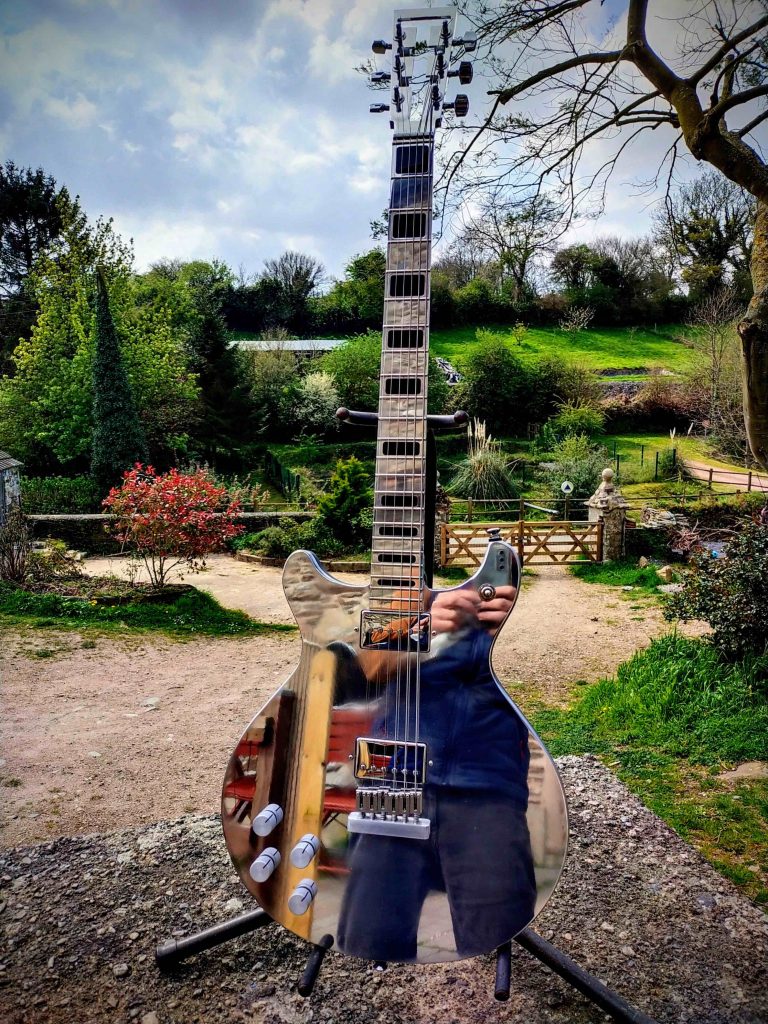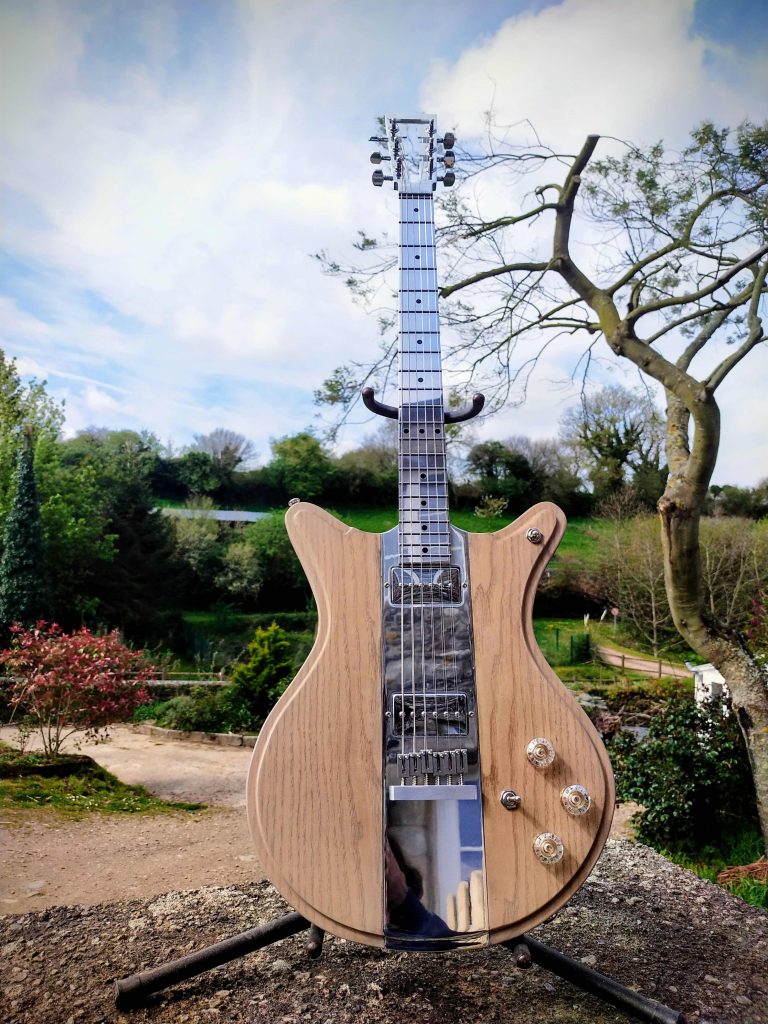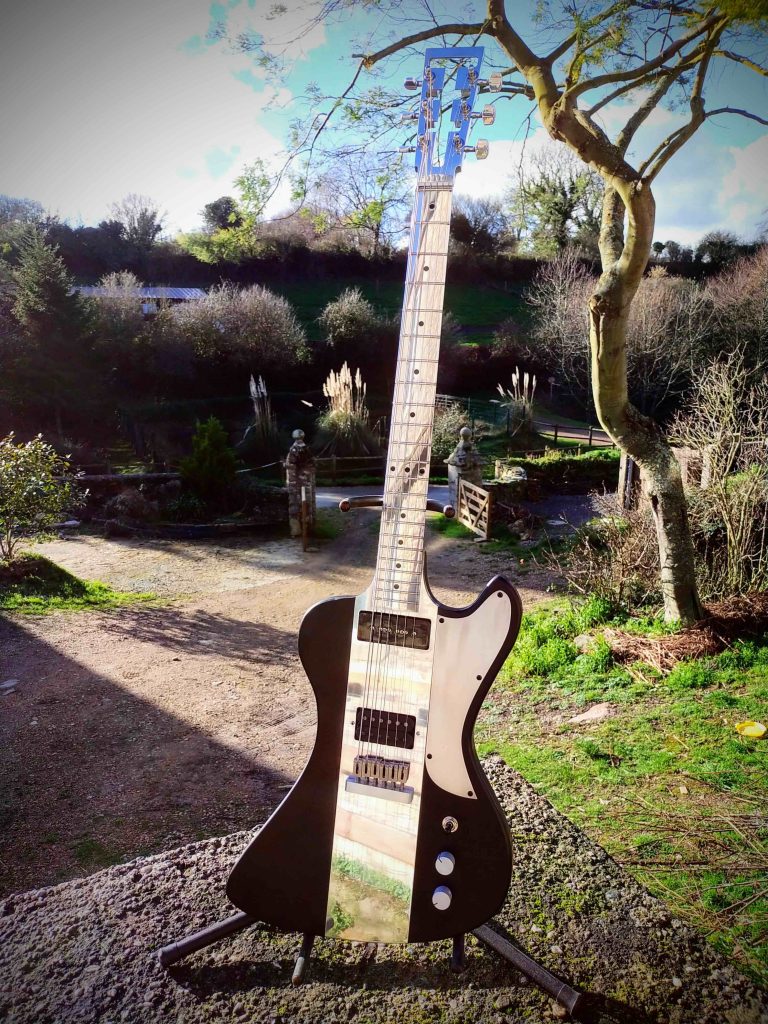Aluminum guitars have continued to be produced by various luthiers and companies over the years, often appreciated for their unique tonal characteristics, sustain, and eye-catching aesthetics. While not as common as wood guitars, they have carved out a niche in the market for those seeking unconventional and innovative instrument designs.
Today, modern luthiers like David Giot continue to explore the possibilities of aluminum in guitar construction, pushing the boundaries of design and sound. Their dedication to craftsmanship and ability to incorporate aluminum into their instruments contribute to the ongoing history and evolution of aluminum guitars in the music industry.
From the bustling noise rock scene to the realm of aluminum guitars, David Giot has forged a remarkable journey as a luthier. With a background in science and IT, David’s passion for music and instruments led him to explore the world of guitar building. His fascination with aluminum neck guitars eventually led him to create his own prototypes and establish TTTides guitars. David shares his experiences, challenges, and unique approach to crafting personalized instruments in this interview. Join us as we delve into the creative mind of David Giot, uncovering the artistry and innovation behind his aluminum axes.
Can you tell us about yourself and your background as a luthier?
My name is David Giot, and I am 44 years old. I grew up in Cherbourg, French Normandy.
Almost all of my parents and friends worked in the submarine industry.
The sharing of their knowledge in metal and alloys is, until today, very helpful in my building technique. I studied technical drawing mathematics and machine automation in Rennes (french Brittany) and worked later for the Space Agency in Munich and on projects for the European Commission in Luxembourg.
When did you first develop an interest in music and instruments, and what sparked your passion for luthiery?
The noise rock scene in Cherbourg and Rennes was huge, and I had the chance to share that same passion with many people (Big up to Kfuel!, studio Chaudelande).
I played guitar in different noise rock bands, and I dreamt about owning an aluminum neck guitar one day. I ended up building my own aluminum neck guitar in my garage, with the help of my father, and continued building other prototypes for my friends playing in noisy rock bands. That was 18 years ago.
Also, until now and since 2004, I have had a small record label called Whosbrain Records; this was, obviously, a way to build up a good relationship among the noise rock community.

Can you share your training and education journey in the field, including any courses, workshops, or apprenticeships you have taken?
I learned how to deal with CNC automation machines at school, how to use 3D design software programs, but also I learned new techniques alone, etc…
The Internet is a wonderful thing to use to learn something. I did a lot of
prototypes and practiced different techniques for 15 years before launching TTTides guitars. Lots of try & errors were made back then.
Can you walk us through your journey to becoming a professional luthier, including any challenges you faced and how you overcame them?
After a career in science and IT, I wanted to get more control over my life and so my girlfriend suggested I go ahead and try what I always wanted to do, i.e., build aluminum neck instruments.
Also got the support of Heiko from OKKOFX and Don Vito, whom I share a beer with from time to time when they are on tour (Cheers, Heiko !).
He tried my first model02 prototype, liked it, and then pushed the brand to a nice forum called “aluminum axes” on Facebook.
About the challenges, Honestly, they were to set up a good working environment at first. It is still sometimes a struggle to have a nice way of organizing the workshop because I have never been an apprentice in such an environment. But I am trying every day to improve at cleaning and ordering stuff.

Can you describe your signature style and what sets your guitars apart from others?
I mostly think aluminum guitars should be neck-through.
So 95% of my guitars are neck through, and even a bit more as the aluminum goes for the headstock until the tail of the body.
I also came up with the panfront alu design, which is a guitar that has the neck and the front part of the body milled from one big piece of aluminum. The headstock is also pretty unique. And apart from that headstock , everything can be customized.
Can you share your experience with custom orders and how you approach working with clients to create a unique and personalized guitar?
I don’t have a click and buy approach (even though i might need to go this way soon). I prefer to talk to the customer about their needs etc …So I like to refine the specs with people about their project (they mostly know what they want anyway).
But regarding custom guitars, having to talk to the client before they buy is a natural way of filtering the compulsive purchases. The waiting list is also here to ensure that customers are 100% wanting their custom guitars.
I really don’t want to contribute to flooding the world with aluminum guitars (don´t get me wrong they are nice, but they need to stay unique in a sense).
I also want to stay competitive in terms of prices , these guitars are quite expensive but I am trying to make them “affordable”.

What are some of the biggest challenges and rewards of being a luthier, and how do you balance the creative and technical aspects of the craft?
The biggest challenges are the attention to every detail… also machining a guitar and then finishing it by hand is a risky business 🙂
But having my guitars played live by bands I listen to and admire is really rewarding. Also, having clients ordering several guitars from me is something special.
Like this, you build a kind of relationship that is unique.
Most of the creativity comes from the customer themselves; I don’t take credit for those crazy ideas. I just try to implement them the best I can.
What are your future goals for your business, and are there any new projects or collaborations you have planned?
My goal is simple: try to continue my way with no growth, nothing crazy. Of course, I try to ameliorate my workshop and improve my working procedure.
I would like to have a bit more time to try new things, like some semi-hollow alu guitars (cheers Laurie !).
The collaborations with bands continue, and more will also happen (even if I am a bit late on that…).

To conclude, can you share any final thoughts or advice for aspiring luthiers, particularly those who are interested in incorporating aluminum into their work?
If you want to get into building aluminum instruments, do it for a good reason. Music and life around music should always be the main motivation for building instruments.
I guess, there are no special rules to get into it; it can be done with CNCs but also by hand, why not.
Cheers !
Thank you for joining us on this insightful journey into the world of luthier David Giot and his remarkable aluminum guitars. We hope you’ve been inspired by his passion, dedication, and innovative craftsmanship. From his humble beginnings to becoming a renowned figure in the music industry, David’s story reminds us of the transformative power of following one’s dreams.
We extend our sincere gratitude to you, our valued viewers, for taking the time to delve into this interview. Your support and engagement fuel our commitment to bringing you captivating stories and interviews. We invite you to continue exploring the rich tapestry of music, artistry, and craftsmanship that resonates within the world of luthiery. Thank you for being part of our journey.

